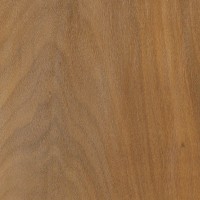 |
Common Name(s): Chakte Viga, Paela, Aripin Scientific Name: Coulteria platyloba (=Caesalpinia) Distribution: Tropical areas of Mexico and Central America Tree Size: 20-30 ft (6-9 m) tall, 1-2 ft (.3-.6 m) trunk diameter Average Dried Weight: 58 lbs/ft3 (935 kg/m3) Specific Gravity (Basic, 12% MC): .78, .93 Janka Hardness: 2,250 lbf (10,010 N) Modulus of Rupture: No data available Elastic Modulus: 2,574,000 lbf/in2 (17.76 GPa) Crushing Strength: No data available Shrinkage: Radial: 2.8%, Tangential: 8.2%, Volumetric: 10.6%, T/R Ratio: 2.9 |
Color/Appearance: Heartwood bright orange to golden brown. Sapwood pale white to yellow.
Grain/Texture: Grain is usually straight, though sometimes interlocked. Has a fine, even texture with a good natural luster.
Endgrain: Diffuse-porous; small pores in no specific arrangement; solitary and radial/clustered multiples of 2-4; growth rings indistinct; rays not visible without lens; parenchyma vasicentric, confluent, and banded.
Rot Resistance: Chakte Viga has been used as a fence-post material, with reports stating that the wood lasts up to 100 years in the ground.
Workability: Despite its high density, Chakte Viga generally responds well to most machining operations, though interlocked grain can result in tearout. Turns, glues, and finishes well.
Odor: No characteristic odor.
Allergies/Toxicity: Although there have been no adverse health effects specifically reported for Chakte Viga, other species within the Caesalpinia genus have been shown to cause skin irritation. Usually most common reactions simply include eye and skin irritation. See the articles Wood Allergies and Toxicity and Wood Dust Safety for more information.
Pricing/Availability: Larger pieces of Chakte Viga in lumber form can be hard to find, but smaller pieces for turning projects are more readily available. Prices tend to be quite high for this imported species.
Sustainability: This wood species is not listed in the CITES Appendices or on the IUCN Red List of Threatened Species.
Common Uses: Inlays, furniture, flooring, and turned objects.
Comments: Perhaps the closest relative to the more-famous Brazilwood (used for violin bows), Chakte Viga shares many of the same excellent acoustic properties. With great color, a smooth texture, and a unique iridescent quality that seems to shimmer under the proper wood finish, Chakte Viga has an almost subliminal cachet.


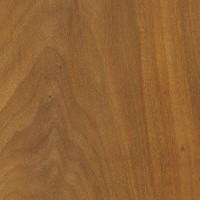
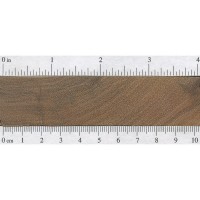
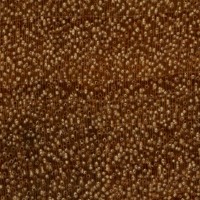
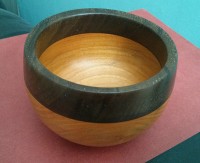



I bought a small Chakte Viga board since it was stunning carrot orange and said take me home. I ended up making a box out of it. It was a nice wood to work with. I’d say it has the consistency of working with hickory. Is ding resistant and takes a good polish. The wood has darkened a bit to a very nice deep orange color. I expect it will stay that way.
Here’s a small bowl from Chakte Viga
What colour will this wood turn to with age?
Great turning wood that reminds me a lot of Brazilwood.
Have you seen this chakte viga known as orangeheart?